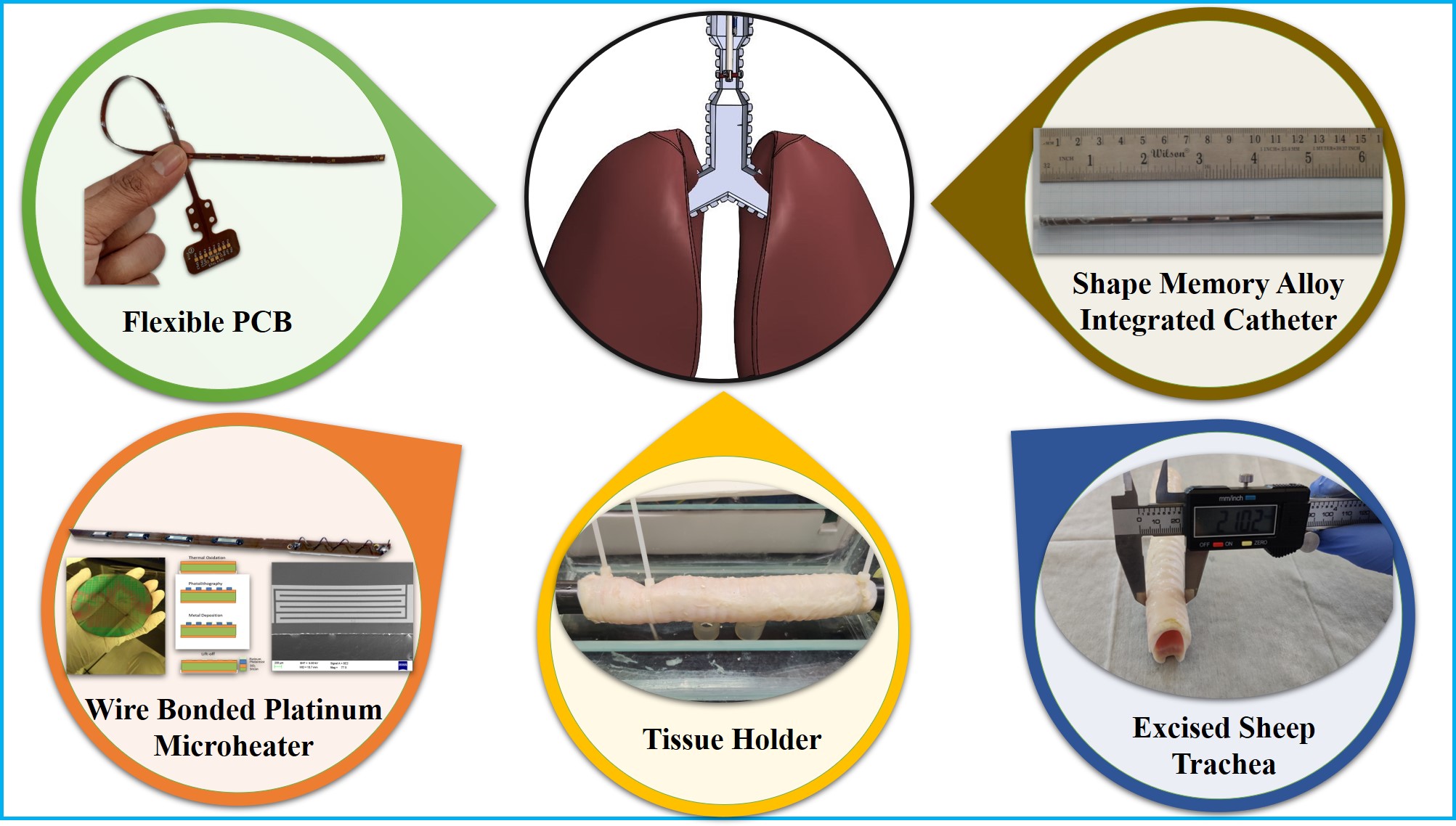Design and development of a cardiac ablation catheter integrated with MEMS force sensor and haptic feedback
Problem Statement:
Radio frequency (RF) ablation catheters have revolutionized the treatment of cardiac arrhythmias especially for atrial fibrillation. The treatment of AF is carried out with a minimally invasive medical procedure using catheters. The tip of the catheter contains electrode pairs which serve as a conduit to record signals as well as a gateway to deliver energy to the tissue. Hence the lesions are formed to eradicate the conductive pathways. To optimize effective lesion formation, a catheter with a tissue contact force is another key parameter. Thus, the knowledge of accurate force applied during the procedure is very much important to achieve lasting freedom from arrhythmias. The current force sensing technology integrated on the commercial catheters are limited by its resolution or range. Additionally, the commercial catheters are not integrated with haptic feedback that can improve the perceptual capability of the operator. Thus, the lack of haptic feedback will necessitate the electrophysiologists to rely on their artistic skills and experience for the elucidation of the recorded data.
Concept:
To design and develop a microelectromechanical system (MEMS) force sensor and haptic feedback mechanism that can be integrated with the catheter such that it can provide a high-resolution force data accurately as well as vibro-haptic feedback to the electrophysiologists. Thus, the system can improve the safety and efficacy of the contact force sensing. This may potentially encourage electrophysiologists to undertake complex ablations without the fear of failure, which is the status, owing to the lack of state-of-the-art hardware. An accurate information about the force experienced at the catheter tip with high-resolution will help the electrophysiologists to corelate the lesion formed as well as the haptic feedback system to provide better perceptual capability to the electrophysiologist.
Technology/Science involved:
MEMS, Mechatronic systems, Catheterization, Cardiac ablation, Haptic feedback
Multimodal Sensor Integrated Diagnostic Tool for Chronic Airway Management
Problem Statement:
Chronic upper airway obstruction in infants is often debilitating requiring immediate attention. The small airway geometry is susceptible to a few airway disorders such as congenital tracheal stenosis, tracheomalacia, tracheal agenesis and, atresia. Chronic inflammation, reduction in biomechanical property of the tissues, progressive narrowing and airway collapse occur due to a diversity of pathological anomalies whose origin remains unknown in most cases. Thus, it is a clinical entity that warrants timely diagnosis and treatment. Management and treatment strategy often rely on a clinician’s expertise and is based on suspicion index. Lack of a definitive approach to treat patients with chronic airway obstruction demands for diagnostic tools in a clinical setting that can facilitate better prognosis.
Concept:
The tool is a combination of an array of flow sensors and an actuator at the distal end designed to house a tactile sensor. The flow sensor array yields airflow patterns across various segments of the tracheobronchial tree based on the amount of heat flux on the thermal sensor. The flow patterns illustrate that the voltage sensed is proportional to the flow rate which directly corresponds to the degree of constriction. The work of tactile sensors is to delineate the healthy and malacic tissue based on the sensor diaphragm deflection. This way, factors such as site of obstruction, malacic segment and length of stenosis can be determined simultaneously without the need for catheter exchanges.
Technology/Science involved:
MEMS-based Sensors, Handheld Medical Diagnostic Tools, Central Airway Obstruction


